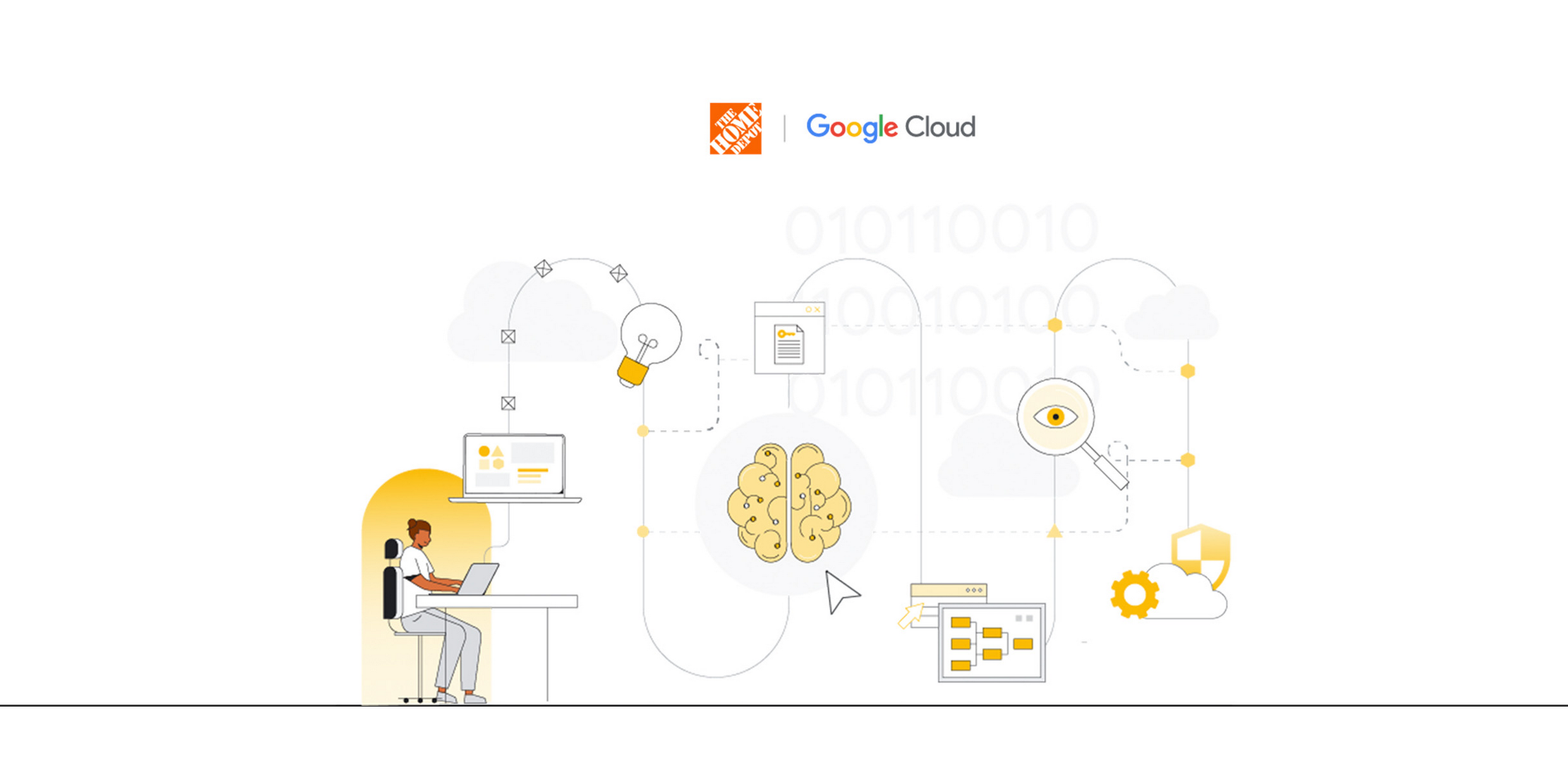The Home Depot orchestrates self-service cloud solutions with Workflows

Paul Brennaman
Software Engineering Manager, The Home Depot
Evan Wood
Senior Software Engineering Manager, The Home Depot
Try Google Cloud
Start building on Google Cloud with $300 in free credits and 20+ always free products.
Free trialAs one of the world’s largest home improvement retailers, The Home Depot (THD) needs to seamlessly manage the flow of work across a wide variety of IT systems to provide first-class retail experiences for our customers both online and in-store. We began our cloud migration journey back in 2017, with early successes leading us to move more of our workloads to the cloud. This shift drove engineering and technical innovation across the company, but has also increased the need for greater governance to ensure compliance and strong cybersecurity.
Our “Cloud Enablement” team needed a workflow management system that could streamline cloud resource creation projects across the company’s engineering teams. Our main challenge was to create a frictionless developer experience while still securing workflows and enforcing best practices. Most importantly, we were searching for a fully managed solution to workflow automation and governance needs. This would help cloud project creation become more efficient and cost-effective, with developers able to focus on writing and coding the resources themselves, rather than on managing infrastructure. We also wanted our engineers to be able to quickly track and trace their workflows at all stages of the development process — especially when they failed to complete — to increase internal efficiencies related to troubleshooting and resource downtime.
After rigorous testing of potential workflow systems, The Home Depot determined Google Workflows was the ideal solution to meet our needs. Workflows is a fully managed Google Cloud service that enables service integration and orchestration, lightweight data and machine learning pipeline orchestration, and cloud platform automation. This low-code, serverless solution allows developers to focus on their core business needs, rather than on their infrastructure management, which enables them to facilitate the creation of more resilient cloud solutions. Not only can Workflows call any internal or external HTTP endpoint, its workflows are also durable — a workflow supports retries and can wait up to one year for operations to complete without incurring any charges. Other key features include support for human-in-the-middle approval flows and for parallel iteration and branching using atomic variables. Workflow executions can be triggered by an event, allowing developers to build applications and pipelines with event-driven architectures and allowing IT and cloud platform teams to trigger automation workflows based on an event, such as a request from a developer for cloud resources.
The Home Depot successfully launched our Galaxy system, which builds upon two previous generations of testing and development, by leveraging the powerful automation and orchestration functionalities of Workflows. One of the biggest benefits of Workflows’ processes is their composability. We can now deploy a microservices approach that enables our IT teams to use this new self-service system to quickly compose new cloud services by drawing from a series of pre-built and custom workflow tasks.
Google Workflows forms the backbone of THD’s Galaxy system, which orchestrates approvals in ServiceNow and cloud resource creation through a GitOps workflow that uses Terraform Enterprise. Galaxy’s user-friendly interface supports the speedy provisioning of cloud resources and makes valuable use of Workflows’ subworkflows feature to ensure authentication and authorization requirements are met and that common error handling issues can be easily resolved. The system even automates pull request flows and provides status endpoints for those requests to populate a real time tracker for developer feedback.
With this self-service Galaxy platform, The Home Depot’s developers can now easily integrate all the required subworkflows as part of their cloud project creation process. This enables developers to focus on writing the resources they need to tackle their business problems and service their customers’ needs, rather than losing valuable time rewriting generic request flows or securing all the necessary permissions for governance purposes. Although THD briefly explored authoring our own custom workflow automation engine, we realized that by utilizing Workflows we could easily achieve our workflow orchestration needs, all with GCP native services. Our developers are also able to draw upon Google’s existing bank of high-quality technical documentation and training resources, rather than expending developer time and resources producing our own custom documentation.
The Home Depot’s Galaxy system empowers our engineering teams by ensuring an accelerated path for the development and testing of new resources and services within our cloud community. Harnessing the efficiency and composability of Google Workflows, this new self-service system is already delivering feature parity with THD’s existing governance and workflow solutions. We are now turning our attention to building easy self-service paths to service web applications in multi- and single-tenant GKE clusters, while ensuring these resources remain fully conformant with THD’s security and compliance policies.
To learn more about Workflows, Google’s serverless orchestration engine, visit the Workflows landing page today, or go directly to the Cloud Console to try out three of its most common patterns.



